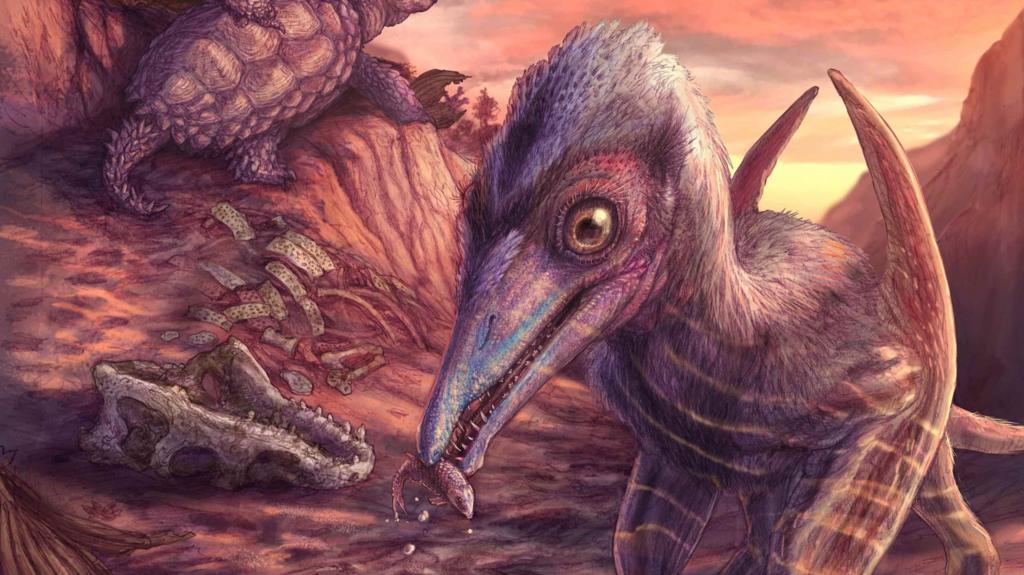Scientists have announced the discovery of a previously unknown species of pterosaur, the flying reptiles that once dominated the skies alongside the dinosaurs over 200 million years ago.
The fossilized jawbone, initially unearthed in Arizona in 2011, has undergone advanced scanning analysis, revealing unique characteristics that classify it as a distinct species.
The research team, spearheaded by experts from the Smithsonian’s National Museum of Natural History in Washington D.C., has named the new species Eotephradactylus mcintireae, translating to “ash-winged dawn goddess.”
This name alludes to the volcanic ash deposits that played a crucial role in preserving the pterosaur’s remains within an ancient riverbed.
The detailed findings of this discovery have been published in the prestigious journal Proceedings of the National Academy of Sciences.
Estimated to be approximately 209 million years old, this specimen is now recognized as the oldest pterosaur fossil discovered in North America.
“The fragile nature of Triassic pterosaur bones, being small, thin, and often hollow, makes their fossilization an exceedingly rare occurrence,” explained Dr. Kligman.
The discovery site, located within the Petrified Forest National Park, is a rich fossil bed embedded within an ancient desert landscape.
Over two hundred million years ago, this area was a riverbed where successive layers of sediment gradually enveloped and preserved the remains of prehistoric life, including bones, scales, and other biological evidence.
This river once flowed through the central region of Pangaea, the supercontinent that unified all of Earth’s landmasses.
The pterosaur jaw represents just one component of a diverse collection of fossils unearthed at the site, including skeletal fragments, teeth, fish scales, and even fossilized excrement, known as coprolites.
According to Dr. Kligman, “The identification of pterosaur remains in these ancient river deposits suggests the potential for discovering similar fossil-bearing sites within Triassic rock formations worldwide.”
Analysis of the pterosaur’s teeth has offered insights into its dietary habits, revealing that this seagull-sized reptile likely consumed specific types of prey.
“The teeth exhibit an unusual degree of wear at their tips,” Dr. Kligman noted, “indicating that this pterosaur likely fed on creatures with hard body parts.”
Speaking to BBC News, he suggested that the pterosaur’s primary food source may have been primitive fish encased in bony scales.
Researchers emphasize that the discovery site provides a unique “snapshot” of an ancient ecosystem, where now-extinct animal groups, such as giant amphibians and ancient armored crocodile relatives, coexisted with species recognizable today, including frogs and turtles.
Dr. Kligman suggests that this fossil bed offers evidence of an evolutionary “transition” that occurred 200 million years ago.
“Here, we observe groups that would later thrive living alongside older animals that did not survive past the Triassic period.”
“Fossil beds of this nature enable us to confirm the co-existence of these diverse animal groups.”
A curated selection of compelling images captured in Bristol this week.
A dinosaur, previously classified incorrectly and approximately the size of a Labrador, has been reidentified as a new species and subsequently put on display.
Initially misidentified and misunderstood, this dinosaur has now been recognized by scientists for its unique characteristics and significance.
Dinomania, an interactive entertainment event centered around Dinosaurs, is scheduled to take place on June 17th.
Dinosaur skeletons discovered within a museum collection in Mongolia are identified as ancestors of the formidable tyrannosaurs.

